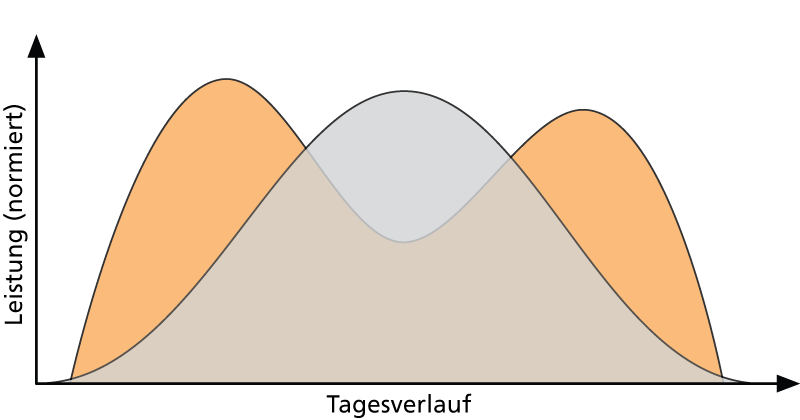Tips & Tricks | Focus Regulars' Table KW38/2018
Bifacial modules - the second face
Why use less when you can use more? Bifacial "two-faced" modules use not only the direct solar radiation on the front side, but also the indirect and diffuse light on the back side.

Success factor
The decisive factor is the albedo (from the Latin albus "white") of the ground - i.e. its reflectivity. The higher the albedo, the greater the possible additional yield. Particularly suitable are therefore:
- Snow and ice
- Light gravel
- Sand (desert) and soil with high sand content
- White and light coatings
Yield comparison
South-facing bifacial plants classically give their additional yield during the midday hours. With east-west orientations, the rear side performs best in the morning and evening - when the sun is flat.
Bifacial module
Bifacial module

East-West vertically mounted

South mounting 20° inclined
Fields of application
There are many fields of application that are predestined for bifacial modules:
- High alpine installations where modules are mounted as vertically as possible (e.g. avalanche barriers).
- Static vertical elements (e.g. noise barriers, bridge railings)
- Balcony railings and balustrades
- Roofing of any kind (preferably with NICER)
Use with LAYUP
Bifacial modules are also popular for ground-mounted systems. Our frameless glass-glass modules can also be used in combination with LAYUP tracker systems. Bifacial module rows are typically positioned slightly further apart to optimize yield. The freed-up area can thus take on additional functions, e.g. for livestock farming.
Influencing factors
Yield forecasts are naturally more complex than with "monofacial" modules due to the many external influencing factors. But the fact is: suitable installation situations enable considerable added value at a small extra cost.
